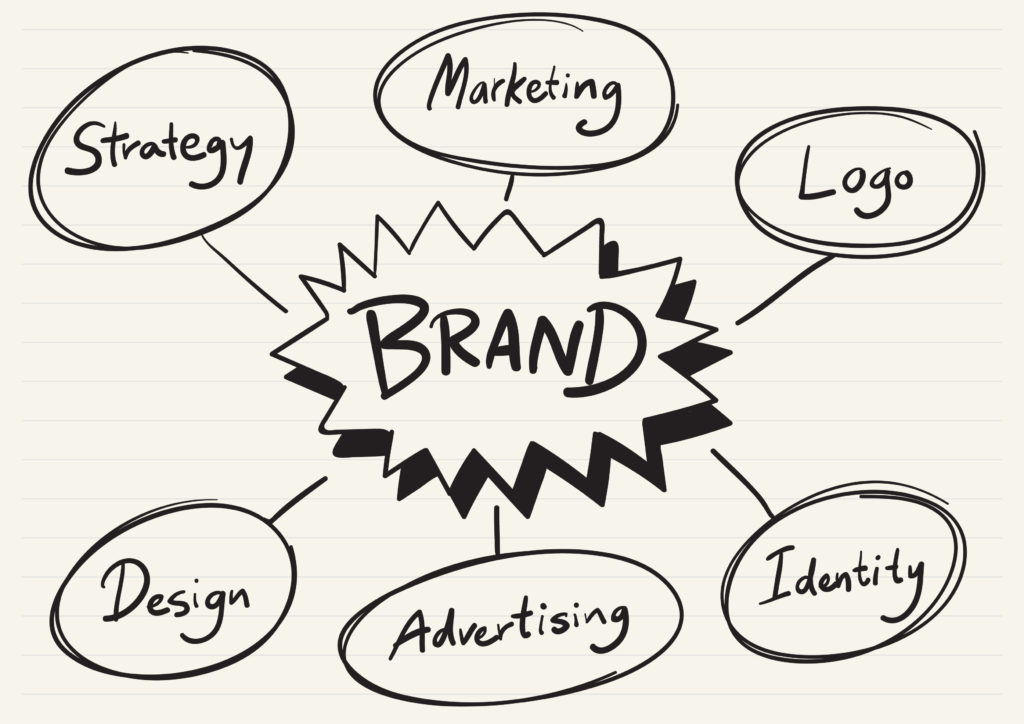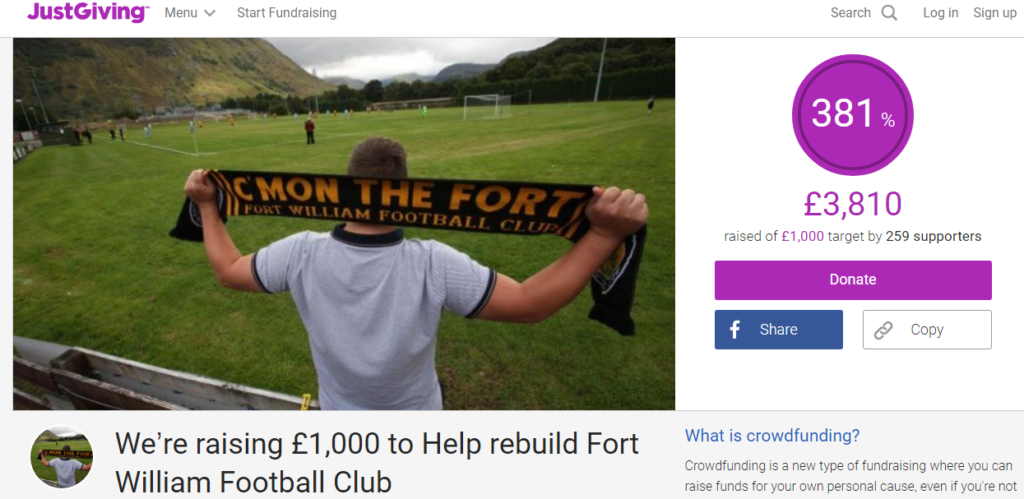Last Updated on: 1st September 2023, 10:57 am
Last week we looked at the basics of sorting out your marketing strategy. Now we’re going to get more specific. Starting with branding. Your club is your brand and, when it comes to marketing, your brand is everything. Having a recognisable and loved brand is the key to growing your club. Recently Real Madrid was given a brand value of $1,846 million. So, in terms of value, a club’s brand has a lot of power. Having a strong brand identity can be helpful when trying to bring in sponsorship. Creating a brand that works will help your club’s credibility and show your real value.

created by rawpixel.com – www.freepik.com
Brand identity
So, what are we talking about when we say “brand identity”? It’s best to think of it as the way your target market sees you. Your brand identity is the way that you make your target market understand who you are as a club. It can include things like:
- Your visual identity
- Your voice
- Your personality
- Your values
A successful football club brand should be consistent across all communication and experiences associated with the club. You need something that fans can get behind and proudly show off. When building your club’s brand you should be thinking about:
- Kit
- Environment (club, stadium, etc)
- Signs, packaging, or any printing
- Your club website
- Online advertising
- Social Media accounts
- All content marketing
If you don’t keep your branding consistent throughout everything, then it won’t help you create brand awareness and bring more people into your club.
Know Your Club
Before you start building your brand identity, you must know who you are as a club. What are your values? What are the aspects of your club that you think people need to know about you? If you don’t have a clear understanding of who you are, where you’ve come from, and where you’re going, then you aren’t going to be able to create a strong brand.
It also helps to look at other clubs. Obviously, you don’t want to copy what anyone else is doing but it’s good to get an idea of how other clubs have built their brand and made it work for them. At grassroots level, it is important to take inspiration from the clubs around you whilst ensuring that you differentiate yourself.

created by creativeart – www.freepik.com
Your Club Badge
Where to start? Well, thankfully, most of you will already have started. Your basic tool for marketing your club is your visual identity. Your club badge is your first step in creating your brand. If you’re starting your club, you want to design a strong and easily recognisable badge. It needs to be clear who you are and, if possible, tell us something about you. Minimalistic and bold designs work best but, if it’s part of who you are, a more intricate design could work. The point is, your badge should definitively represent your club. It should be identifiable no matter where it is seen and should draw the attention of fans and non-fans alike. Not too much to ask, is it?
If you require a new badge but don’t know anyone with graphic design experience, it is always worth reaching out to people on social media or specialist freelance websites. Having a digital copy of your badge in as many formats as possible is always useful. You’ll be able to use a jpeg file for online use but you’ll need a vector format for printing purposes. Always make a note of which font is used on your club badge because, to create a consistent look for your club, you might want to use the same font for titles in any future content.
Your Kit
Once your club badge has been created, you will want to want to start thinking about your kit. Everybody knows just how important it is to get the right design as it will become synonymous with your club. You’ll need to carefully pick the right club colours because they will form the basis of everything that you create. When you look to print posters, programmes, forms, banners, and even clothing, you should make sure everything fits in with your image. Not only should your badge be included on everything you create but you should consistently utilise your club’s colours. This creates brand consistency and strengthens your professional image. Done right, it shouldn’t take long for that look to become synonymous with your club.
What is your brand personality?
Sometimes it can be helpful to assign human characteristics to your brand. Getting an idea of this means you have a well-defined personality that your target market can relate to on a more personal level. You suddenly become less corporate and business-like. This gives you an idea of how you can present yourself. It affects the tone of voice you use in your content and the way you approach customer service.
Football is an inherently emotional sport. You experience drama and suspense. It is full of winners and losers. It’s an unpredictable source of entertainment that has found a universal appeal. It is a sport built on its fans which means you want to create a brand identity that reflects their passion and feelings.

created by Waewkidja – www.freepik.com
USP
Then you need to think about yourselves. Who are you and what do you have to offer? As a grassroots football club, one of the things you’re offering is entertainment. But there are a lot of things out there taking attention away from you. There’s not just professional football but an endless stream of popular culture. What can you give people that will get them outside and cheering your players on? What is the one thing about you that makes you unique?
There are a lot of grassroots football clubs out there that you’ll need to stand out from. To do that, you need to start getting as competitive off the pitch as you are on it. Maybe you have an interesting history that you can use to engage people? Or maybe your grounds are particularly outstanding?
Anything that you have to make people take notice of you is worthwhile. And it doesn’t necessarily need to be a seemingly positive thing. You just need to look at Fort William who has seen its profile rise after being nicknamed Britain’s worst football club. The club went through a difficult time when all of the club officials quit and left the running to inexperienced volunteers. Their story resonated with people and they became the subject of a documentary. Fort William was the subject of news articles and social media posts, which meant their reach increased dramatically. Suddenly, people all around the world knew about a football team playing in the Highland League who hadn’t won a game in 2 years. Recently, the club won their first match and, unsurprisingly, their social media account blew up. A recent fundraising attempt has seen the club raise funds way beyond the amount they’d wanted.

Now, not everyone will be able to pull a Fort William to raise awareness but it just goes to show that anything can help you connect with people. A more workable solution is something like Lewes FC’s approach to creating posters. The club wanted to grab people’s attention so started creating fun, original, and even cryptic posters. They started to include themes to their games and include activities and food that linked with it. It’s all about finding out what you have that nobody else does. That might be a particular skill or a great history. You just need to find something that people can connect with and make it work for you.
That should be your main focus when creating your brand: how can we get people to identify with us and feel a part of the team? You need to give people a reason to connect with you and care about how you’re performing. But, the next question is, who are the people you’re reaching out to? Check our next post to find out who your target marketing is.
